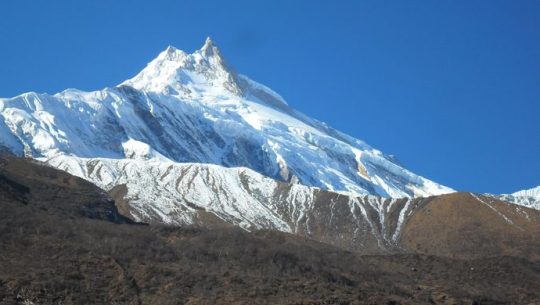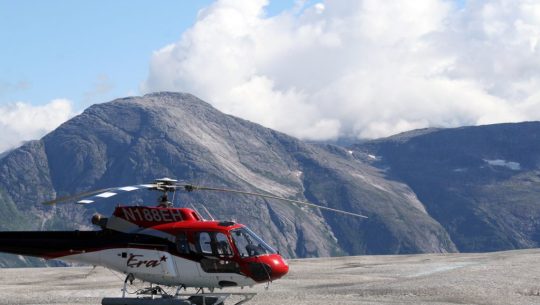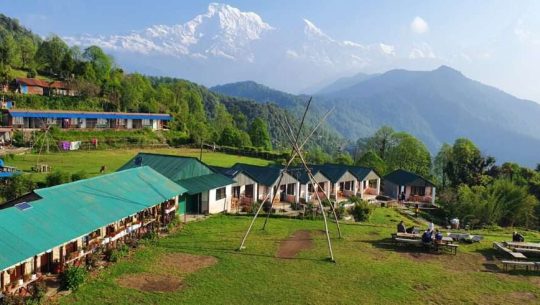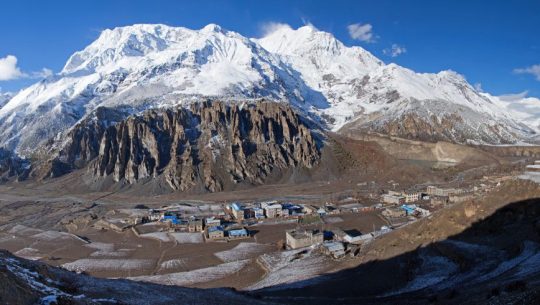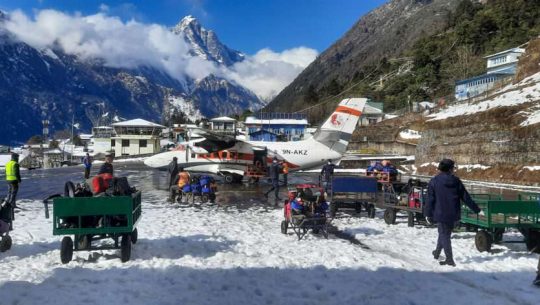Introduction of Tourism
Tourism is the business of hospitality and travel. International Relation for Tourism Development is a major factor in tourism-based hospitality. Whether we are travelers or we are serving travelers’ needs, this exciting and demanding group of visitor services industries touches all of our lives.
Global tourism is now generally recognized as one of the largest industries in the world. And one of the most significant sources of employment and Gross Domestic Product (GDP). Tourism particularly benefits the economies of developing countries, where most of the sector’s tourism jobs and businesses are being created. The tourism industry is useful to support the promotion and development of society and nation.
Investment Promotion: The travel and tourism industry is critical to the global economy. This resilient industry is a leading generator of jobs and tends to outpace the growth of other major industries including manufacturing, financial services, and retail.
Business & Product Development: Tourism is a complex service-driven global industry that is constantly evolving, and the skills and knowledge required to operate a tourism business are pertinent to its success.
Circuit & Route Development: The flow of people in and around a destination presents an important opportunity to enhance tourism’s ability to generate significant economic impact, especially in rural and remote destinations.
Tourism and touristic terms were initially used by the United Nations in 1937. The word tourism is retrieved from the word Tour. Which is rooted in the Latin word “Turns” meaning turning and rounding back and forth between the source and the destination; it has entered Spanish and French, and ultimately English through Greek. However, the word tourism emerged when middle-class people began to travel, and that’s when people got more financially and their life expectancies increased (Yavari, 2014). Different definitions are provided by organizations and individuals to identify tourists, which are referred to in the following. The term tourism refers to a collection of travels between sources and destinations for leisure, recreational, entertaining, sports, visual, commercial, and cultural purposes, in which the tourist is not at the destination for employment and permanent residence (Papeli Yazdi, 2014). In 1925, the Committee of the UN Statistics recognized the following people as tourists:
International Relations for Tourism Development
- Those who travel for pleasure and personal reasons for medical and therapeutic purposes.
- Those who travel to other countries for conferences, exhibitions, religious ceremonies, sports events, and so on.
- Those who travel for marketing and commercial affairs.
- Those who travel by ship and stay in a port on the way for up to 24 hours (Feiz Bakhsh, 1976).
In 1937, a special committee was established in Rome to examine some of the issues of the tourism industry and provided a definition for the term tourist: People who travel to a foreign country for 24 hours or more are called tourists.
According to the United Nations definition, proposed by the International Tourism Conference in Rome, “A tourist or temporary visitor is someone who travels to a country other than his/her own country for recreation, resting, holidays, visiting interesting sites, medical and therapeutic reasons, business, sports, pilgrimage, visiting relatives, missions, and participating in the conferences; provided that his/her stay is not less than 24 hours at least, and not more than 3 months at most. In this regard, employment purposes are not considered. “(Rezvani, 2015).
At present tourism plays a fundamental role in the development and sustainability of peace in the world. It is an essential indicator of security and socio-economic conditions in various countries of the world. The Constitution of the World Tourism Organization was approved in 1970, and this international organization was responsible for practicing tourism issues. Therefore, tourism has been introduced as an industry and vital force for mutual understanding, the development of societies, and cultural interactions of nations. The World Tourism Organization is a distributional allocation whose main objective is to promote and develop tourism, with the consideration of economic development, international understanding, peace, and universal respect regarding human rights and fundamental freedoms without any distinctions in terms of race, the development of human resources and the increase in the number of tourists in the world. In addition, tourism emphasizes the cultural and moral values of the world’s nations by emphasizing cultural significance (Ziaei Bigdeli, 2016).
International Relations for Tourism Development
Due to its unique features, the tourism industry is renowned as a hidden export and smoke-free industry by scholars and experts. In recent years, the industry has been ranked third in the world’s major economic fields after the oil and automotive industries and as predicted by researchers, it will be the world’s largest industry and economic activity by 2020. Since tourism is a very important factor in income diversification, oil-rich countries and countries that have only one source of income should pay more attention to the tourism industry and should not easily neglect it.
International Relations for Tourism
Having an impact on the economies of the countries has led tourism to be regarded as one of the topics of dialogue between high-level foreign affairs committees. In other words, “diplomacy is based on tourism” and therefore has succeeded in gradually finding its place in international treaties and agreements. Given that tourists need to go to embassies to enter other countries, and governments have given different options to their ambassadors as their highest-ranking representatives, they, directly and indirectly, play a significant role in accepting tourists; therefore, the ambassadors take all aspects of the internal, external and regional issues of tourists into account by diplomacy and international relations because the implementation of “international relations or tourism diplomacy” will have a very direct and powerful impact on economic, political, cultural and social issues ( Moravej Khorasani, Bi ta).
If economic diplomacy is interpreted as a technique of foreign policy and the domestic economy or, in other words, it is regarded as using foreign policy for the achievement of the goals of the domestic economy; the development of tourism in many countries requires the use of economic diplomacy in general and tourism diplomacy in particular. Therefore, the Ministry of Foreign Affairs is dedicated to direct foreign economic relations, including internal decision-making and external negotiations through the abovementioned issues.
The direction and channelization of a diplomatic activity support the expansion of the foreign economy through marketing and extracting foreign business opportunities and investing and internationalizing business and space for the tourism industry (Faraji Rad, 2004).
International Relations for Tourism Development
If these items are implemented accurately by the head of the diplomatic body, they can expand the tourism space and markets. Tourism is regarded as a process that can achieve the necessary dynamism through short-term and long-term plans as well as the development of tourism and the mental and business cooperation of firms and institutions; it is possible to create new jobs in this field to solve the problem of unemployment and create social vitality among people.
For example, expert decision-making can resolve the challenges ahead, and observe new horizons on a national, transnational, and global scale by changing and empowering the tourism infrastructure and by increasing the role of people in the implementation of tourism programs, or by involving the private sector and attracting domestic and foreign investment, reducing intermediary affairs, reducing the role and direct involvement of governments in the tourism industry, and reducing the performance of governments to implementation of three key principles of guidance, support, and oversight. Tourism does not mean the industry as a whole, but it is a set of industries that experience varying levels of dependence on tourists, and this dependence undergoes a transformation through the passage of time and space.
In the meantime, tourism development is affected by the systematic functioning of all economic, social, political, security and regulatory, and legal sectors, and so on. The diplomacy system of countries also has a unique and distinguished position related to other institutions and organizations in the very important category of tourism. International tourism is one of the most significant forms of tourism that has a significant, direct, and indirect relationship with the foreign affairs Department’s decisions; it is interpreted as tourism diplomacy in specialized circles and can guide, channel, and facilitate international relations and platforms of the tourism industry.
International Relation for Tourism Development
Therefore, taking into account the needs of the countries, existing capacities, and the necessity of introducing unique tourist attractions in each country, the foreign ministers must take deep, secure, and expert steps in the field of tourism diplomacy. Creation, improvement, development, and deepening of geopolitical relations with neighboring countries and other tourism markets in different parts of the world are regarded as priorities of diplomatic and international relations along with economic diplomacy in general and capacity building in the field of the tourism industry, in particular. Pathologically, the operations of most countries in the field of economic diplomacy with an emphasis on tourism have not been successful up far, and still have a long way to reach the ideal point in terms of the potential and actual capacities of tourism.
History of Tourism
If we study prehistory or proto-history or archeology we will come to know that humanlike beings have been moving from place to place for about 1 million years. Historically, the ability to travel was reserved for royalty and the upper classes. From ancient Roman times through to the 17th century, young men of high standing were encouraged to travel through Europe on a “grand tour”. Through the Middle Ages, many societies encouraged the practice of religious pilgrimage, as reflected in Tales and other literature.
As early as the third millennium B.C., Egypt was a Mecca for travelers from the known world; they came to see the pyramids and other wonders of the prosperous and civilized country. Nobles sailed the Nile in small boats with comfortable cabins; on land, they traveled in litters or chariots.
Tourism is not a new phenomenon for Hindus. In Sanskrit literature, there are different terms for tourism derived from the root atan, which means leaving home for some time to other places. They had different types of tourism known as paryatan (going out for pleasure and knowledge), deshatan (going to places of religious importance). We get even many references of akhet (hunting) and vihara ( excursion).
International Relation for Tourism Development
Tourism History in Nepal
Tourism is the up growing industry in Nepal and its largest source of foreign exchange and revenue. Possessing eight of the ten highest mountains in the world, Nepal is a hotspot destination for mountaineers, rock climbers, and people seeking adventure. The Hindu and Buddhist heritage of Nepal and its cool weather are also strong attractions.
Mount Everest, the highest mountain peak in the world, is located in Nepal. Mountaineering and other types of adventure tourism and ecotourism are important attractions for visitors. The world heritage site Lumbini, the birthplace of Gautama Buddha, is located in the south of the West region of Nepal (which despite its name is located in the center of the country) and there are other important religious pilgrimage sites throughout the country. The tourist industry is seen as a way to alleviate poverty and achieve greater social equity in the country.
Tourism in Ancient Nepal
During ancient times tourism in Nepal was from a different perspective. According to Buddhist literature, ‘Manjushree’, a Buddhist mystique, visited Kathmandu Valley, and cut the Chovar Hill with his sword for the outlet of water. He drained the water and settled inhabitation. Manjushree is said to have come from Mahachin (China) and is regarded as the first tourist to visit Nepal. It has been illustrated in the chronicle that Gautam Buddha visited Nepal during the reign of Jitedasti, the seventh Kirat King, who stayed in the western part, near Swayambhu. But Nepali historians don’t support this idea. There is no proof of Buddha’s Kathmandu visit.
Emperor Ashok too had visited Nepal. King Ashok visited Lumbini, the birthplace of Lord Buddha, and built the Ashok Pillar there. Then came to Kathmandu Valley and built similar pillars in different places. Regarding the visit of Emperor Ashoka, he has visited Lumbini and Kapilvastu which was written in his inscription. He has placed another inscription in Niglihawa too. Kathmandu’s visit to Ashoka was only written in chronicles which were not regarded as a strong document in scientific history writing. It was not historically proven. Four Pillars found in Patan which was built in Ashoka style might be built by some others who were sent to build by Ashoka.
The Lichchhavi period was regarded as the golden era from the tourism point of view. In the Lichhavi period (400 AD and after), there had been enormous progress of art and culture. Kailashkut Bhawan, Managriha, and Bhadradhiwas Bhawan were the major attractions of the Lichhavi period. How art and culture were developing in Nepal during that period inspired Chinese travelers to come to Nepal and write about Nepal. The marriage of Bhrikuti and Srong-sten Gampo, the king of Tibet gave rise to the establishment of special relations between the two countries. As a result, it was natural for the people of these countries to travel from one country to the other.
Thereafter, Nepal was developed as the only route for a long period to visit China via Lhasa and travel from China to India via Lhasa. This led to an increase in the arrivals of foreigners to Nepal. Famous Chinese traveler, Huien-Tsang, started the journey to India in 629 AD He returned to China via Nepal in 643 AD during his journey to Nepal; Huien-Tsang also visited Lumbini. In 643 AD, another Chinese traveller Li-Yi-Piao, came to Nepal via Lhasa and then visited India 242. Another Chinese traveler, Wang Hiuentse used to travel to and fro Nepal with his companions during 643-657 AD when he was envoy to India. Buddhist Monk, Monastic and preachers visited Nepal during the Lichchhavi period i.e. Shantarakshit in 742 AD, Padma Sambhav in 474 AD, Kamalsheel in 760 AD, Atisha Dipankar in 1040 AD and Milarepa in 1010 AD
Tourism in Medieval Nepal
The Mallas ruled Nepal after the Licchavis. This period is known as medieval history. During the Malla period Christian missionaries came to Nepal to spread Christianity in Tibet. During this period until the reign of Jaya Prakash Mall, many Westerners had visited Nepal for missionary activity. In 1628, Portuguese Father Juan Cabral, during the reign of Laxmi Narshing Malla, ruler of Kantipur, a foreigner, entered Nepal for the first time in the medieval period. Later, many missionaries came to Nepal with a similar purpose. Since 1737 AD, King Jaya Prakash Malla provided written permission to Christians for the settlement and spreading of Christianity in Kantipur. When Kathmandu valley was defeated by Prithivi Narayan Shah he ordered Christian Pastors and Nepali Christians to leave the country. On 4th February 1769, Pastor Giuseppe and 58 Nepali Christians left Kathmandu Valley and went to settle in India’s Bettiah, closer to the Nepal border. During those days, foreign tourists visiting Nepal were the European missionaries. Besides, Chinese, Tibetans, and Indians used to visit Nepal, especially with religious and commercial motives. Similarly, Nepalese traders used to go to Lhasa for business purposes and the Tibetan traders came to Nepal and vice-versa. Thus, religious and trading activity contributed to the development of tourism in the Malla period.
Tourism after the Unification of Nepal (Before 1950)
King Prithvi Narayan Shah united the petty hill states into unified and integrated Nepal in 1768 AD (1825 B.S.). Until the reign of King Prithvi Narayan Shah Nepal was closed to foreigners, especially Europeans. After the treaty of Sugauli of 1816 AD, a British Resident, Dr. Wallich, was appointed in Kathmandu to develop Nepal’s relationship with British India. After this, there were regular visits of British nationalities to Kathmandu. Rana Prime Minister Jung Bahadur Rana visited Britain from 1850-51 AD which played a vital role in introducing Nepal to the Western world. After then Sir Brian Hodgson and Sir Joseph Hooker visited Nepal. French historian Silva Levy visited Nepal during the reign of Prime Minister Bir Shumshere. He wrote a book in the French language about Nepal named History of Hindu Kingdom (which was translated into the Nepali language by Dilli Raj Uprety). Percival Landon, during the reign of Prime Minister Chandra Shumsher, had visited Nepal. Similarly, King George V and the Prince of Wales came to Nepal for hunting in the terai in 1911 and 1921 respectively. The earliest published record on foreign visitors to Nepal is found in Percival London’s book ‘Nepal’, where 153 Europeans mostly British are listed to have visited Kathmandu in a period of 44 years from 1881 to 1925. Despite these developments, the Rana rulers isolated Nepal from external influence till 1950.
Tourism in Modern Nepal After 1950
The democratic movement of 1951 marked a new era in Nepal. In 1950/51, a popular democratic movement was launched which overthrew the Ranas. After this, changes were witnessed in the country. Nepali people were liberated and Nepal was opened for the visitors. With the formation of the Tourism Development Board in 1957, the history of tourism of Nepal has taken rapid momentum. Now, tourism has been recognized as a highly paying industry and very important source of earning. Nepal issued its first tourist visa to Boris Lisanevich, a Russian legendary hotelier invited by King Mahendra Bir Bikram Shah to allow the Thomas Cook Company to send tourists to Nepal. During 1951/52 Hotel Himalaya Inn, Hotel Paras Inn, and Hotel Nepal started their service for the first time in Kathmandu though those hotels were not fully facilitated. On 29 May 1953, Hillary and Nepalese Sherpa mountaineer Tenzing Norgay became the first climbers confirmed to have reached the summit of Mount Everest. In 1954 Snow View Hotel, in 1955 (Boris- the Russian established) “Royal Hotel” and began catering to tourists. In the time of the coronation of the late King Mahendra in 1956; he managed to organize an assembly of large numbers of foreign dignitaries that exposed Nepal as a potential tourist destination in the international community. Till 1959 there were only 88 beds in the hotels for the foreigners. Floodgate opened in the Hotel industry after 1959. After 1959 Coronation Hotel, Imperial Hotel, Panorama Hotel, and Green Hotel (Now Hotel Shanker) were established in Kathmandu. Likewise, Hotel De’la Annapurna 1965, Soaltee Hotel 1966, Blue Star Hotel 1968, and Crystal Hotel 1972 were started in Kathmandu. The same year, the National Tourism Council set up the first five-year tourism development plan under the Ministry of Industry and Commerce. Royal Nepal Airlines Cooperation (RNAC) now Nepal Airlines Cooperation (NAC) was established in 1958 and became a member of the International Union of Official Travel Organization. During 1960 Nepal began direct links to Indian cities First travel agency “Mountain Travel Nepal” now “Tiger Mountain” was established by Colonel Jimmy Robert (British). He also brought the “Tiger Tops” operation in Chitwan National Park to accommodate tourists who enjoy jungle activities.
In 1972, a Tourism master plan was formulated with German assistance that led to the concept of spreading economic activity in Nepal. HMTTC, now Nepal Academy of Tourism & Hotel Management (NATHM) was established by the Government of Nepal in 1972 aiming to produce the skilled workforce required by the hospitality and tourism industry. Chitwan National Park was officially established in 1973. During 1975-1991, Nepal became a hot spot for holidaymakers, adventure seekers, and cultural tourists. The flow of tourists was in increasing trend. Nepal Tourism Board, the official body of tourism development and promotion was established in the PPP model. Different trekking and travel agencies, associations, and hotels began to appear in this time to facilitate increasing tourism demand. The following year of 1998, Nepal celebrated “Visit Nepal 98” which brought overwhelming numbers of tourists to Nepal. The downfall of tourism in Nepal started with the hijacking of Indian airlines from Tribhuwan International Airport in 1999. On the one hand because of the Royal massacre of 2001 and on the other hand, moist insurgency gave a negative message in the international arena that Nepal is not safe for tourism. Tourism slowly started to boom after 2006 when a peace agreement was held with Maoists and the government. Nepal marked 2011 as “Nepal Tourism Year” with the slogan “Naturally Nepal” when 736, international visitors visited Nepal. Similarly, the Lumbini visit year was celebrated in 2012 giving the message that Nepal is now safe for tourism. Nepal is expecting 2 million foreign visitors in 2020.
International Relations for Tourism Development
Recent Trends in Tourism
World Tourism Industry is an industry that is flourishing all over the world. There has been exponential global tourism growth over the past six decades and globally, some 350 million new international tourist arrivals are expected by 2030, arrivals will reach 1.8 billion according to the UNWTO.
However, it is now assumed that tourism activity will decline by 50% in the second half of 2020 bringing this year’s forecast of total export earnings from international tourism to $0.9 trillion down from $1.75 trillion in 2019. The world is facing an unprecedented global health, social, and economic emergency as a result of the COVID-19 pandemic.
Travel and tourism is among the most affected sectors with a massive fall of international demand amid global travel restrictions including many borders fully closed, to contain the virus.
According to the latest issue of the UNWTO World Tourism Barometer, International tourist arrivals (overnight visitors) fell by 72% in January-October 2020 over the same period last year, curbed by slow virus containment, low traveler confidence, and important restrictions on travel still in place, due to the COVID-19 pandemic
The decline in the first ten months of the year represents 900 million fewer international tourist arrivals compared to the same period in 2019, and translates into a loss of US$ 935 billion in export revenues from international tourism, more than 10 times the loss in 2009 under the impact of the global economic crisis.
Challenges and Opportunities in Tourism
Tourism has a long tradition in sustainability-related initiatives, being one of the first sectors to establish definitions and principles for ‘sustainable tourism’, strategies, and action plans (United Nations World Tourism Organization, 1997).
Attempts to encourage the development and growth of tourism activities are often desirable because tourism creates jobs and brings money into a community or country. However, unplanned tourism growth can lead to problems. Although tourism can create greater cultural understanding and enhance economic opportunities, it may also change social structures; may place increasing demands on transportation systems, public services, and utilities; and may lead to environmental degradation.
Whether we are participants in or beneficiaries of (both positive and negative) tourism activities, we are all in one way or another affected by tourism. However, there is still a lack of understanding by the public of the impact of tourism on the environment.
Conclusion
The tourism industry in all of its dimensions depends on the policy of governments. This industry plays a very important role in the political development and the expansion of peace, as well as economic growth and development. Considering that the development of tourism is directly under the political decisions of governments. The development of tourism diplomacy and its implementation can lead to the arrival of tourists, employment, and economic prosperity, as a result of increased national income, and ultimately the establishment of a stable and guaranteed peace.
The main task of diplomacy is to protect the interests of the country in relations with other countries and to develop relations with them. In this regard, the neighbors are of utmost importance because the way of establishing relations with them has a profound effect on ensuring national security, political, and economic development, and the development of mutual relations. As a result, it can be made to improve the development of tourism and international relations:
International Relations for Tourism Development
- Strengthening economic integration in the tourism sector in the form of cluster planning and international tourist-free zones;
- The necessity of adopting deep convergence policies by facilitating and eliminating border controls, adopting the principle of mutual recognition about the standards of products and services of tourism, and deregulation of international transportation rules;
- Correction of business policies between countries through international agreements;
- Strengthening the quality management of tourism services at the National Chamber of Commerce for the supervision of tourism enterprises;
- Holding local events (tourism exhibitions, touristic villages, geo parks, technology parks, museums, and gardens in the susceptible sites of the countries). As well as national and international events (national and international conferences) provide a good opportunity for diplomacy and international tourism relations.
- Foreign ministers can continue to cooperate with international organizations such as the World Tourism Organization, similar organizations, and institutions, as well as NGOs that handle the easy and unhindered flow of tourism from one country to another.
International Relations for Tourism Development
REFERENCES
Ramesh Raj Kunwar, Tourists and Tourism Science and Industry Interference, Ganga
Chaney, Edward, The evolution of the grand tour: Anglo-Italian cultural relations since the Renaissance, 2000,
Latin definition for hopes, hospital, In Latdict – Latin Dictionary and Grammar
Griffiths, Ralph, Griffiths, G. E. (1772).
Asadzadeh, Ali, 2015, Laws in Tourism, Considering the Approach of the International Society and Solidarity of Nations
Black, J. (1985). The British and the Grand Tour, London: Dover.
Brand-Jacobsen, K. (2002). Peace: The Goal and the Way. In J. J.-J. Galtung (Ed.), Searching for Peace , London: Pluto Press.
Churchill, D. (1991). International Leisure Habits Start to Converge, Financial Times, 6 June: 10.
Curtin, P. (1984). Cross-Cultural Trade in World History, New York: Cambridge University Press.
Feyz Bakhsh, Hooshang, 1976, Tourism Industry in Iran and the World, Center for Tourism and Information Services.
Kazemi, Mehdi, 2013, Tourism Management, Seventh Edition, Publications.
Haessly, J. (2010). Tourism and a Culture of Peace. In O. Moufakkir, & I. Kelly (Eds.), Tourism, Progress and Peace (pp. 1-17).
Inskeep, E. (1991). An Integrated and Sustainable Development Approach. In E. Inskeep, Tourism Planning. New York: Van Notrand Reinhold.
Moufakkir, o., & Kelly, I. (2010). Introduction – Peace and Tourism: Friends, not Foes. In I. K. Omar Moufakkir (Ed.), Tourism, Progress and Peace.
Papeli Yazdi, Mohammad Hossein, Saghaei, Mehdi, 2014, Tourism (Nature and Concepts). Tehran: Samt.
Pearce, P, L. (1982). The Social Psychology of Tourist Behavior, Oxford: Pergamon Press.
Poling, B. (1992). Most industry Segments Anticipate Market growth, Travel Weekly, 51 (89):8.
Reuters, L. (1993). International Tourism Picked Up in 1992 – OECD, Reuters, 9 March.
International Relations for Tourism Development
Our service for our guest
Our trips are fully supported and offer personalized service to our guests. If you’re interested to involved in these trips by your interest, time, and physical and mental preparation it’s fine.
Besides this, Hot Spring Trek, Trek near Kathmandu, Panchase Trek, Ghalegaun Trek, Chepang Hill Trek, Chisapani Nagarkot Trek, and Ghorepani Ghandruk Trek are available.
Similarly, the Annapurna Circuit Trek – 14 Days, Annapurna Base Camp Trek – 14 Days, and many more are in the Annapurna Region.
Other hand, the Everest Base Camp Trek – 12 Days, and Everest Three Pass Trek – 17 Days are in the Everest Region
In Langtang Region Holy Gosainkunda Trek – 6 Days, Langtang Valley Trek – 9 Days, Langtang Gosainkunda Chisapani Trek – 13 Days are available.
Manasalu Area Trek – 15 Days, Upper Mustang Trek – 14 Days, Nar Phu Valley Trek – 12 Days, and Rara Lake Trek – 11 Days are in the Restricted Region.
International Relations for Tourism Development
As well as Ganesh Himal, Kanchanjunga, Makalu Trek, and programs are organized by Robinson Crusoe Holidays.
Among the cultural programs; the Honeymoon Tour Package – is 10 Days, the Nepal Pleasure Tour – is 8 Days, the Adventure Package Tour – 14 Days, the Historical Nepal Tour – is 10 Days, the Spiritual Tour package – is 12 Days, the Kathmandu Unique Tour – 5 Days, the Historical Gorkha Village Tour 9 Days, Nepal India Cultural Tour – 10 Days, Nepal Bhutan Tibet Tour – 12 Days.
International Relations for Tourism Development
If you are interested in planning your tour and trek yourself according to your interest we manage it. According to your time duration and schedule, please go to our Plan Trip or Customize Trip.
Robinson Crusoe Holiday is always ready to provide excellent services for our guests. Based on our cultural motto “Matri Debo Bhaba, Pitrii Debo Bhaba, Atithi Debo Bhaba.” Mother as a God, Father as a God, and Guest as a God.
POPULAR PACKAGES

